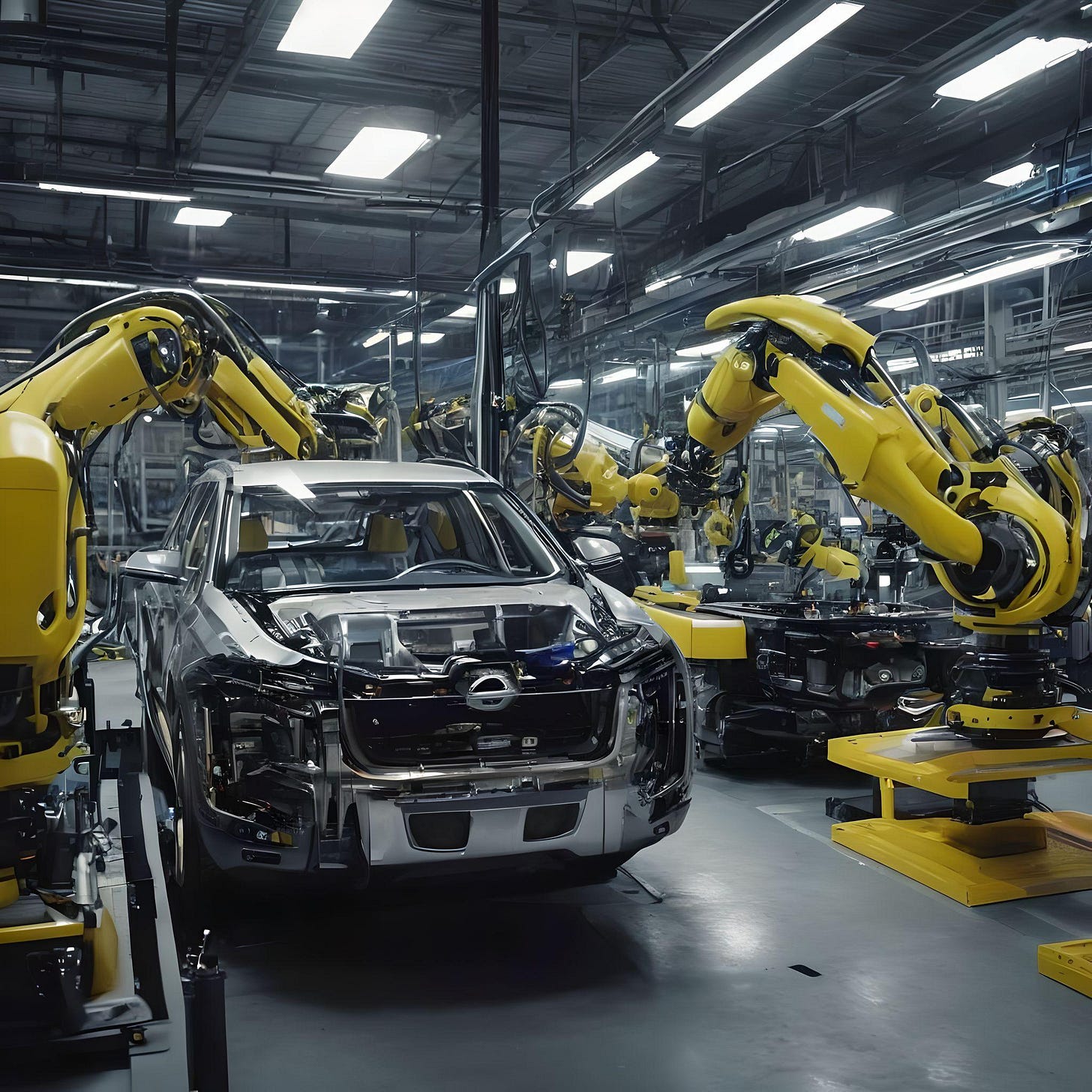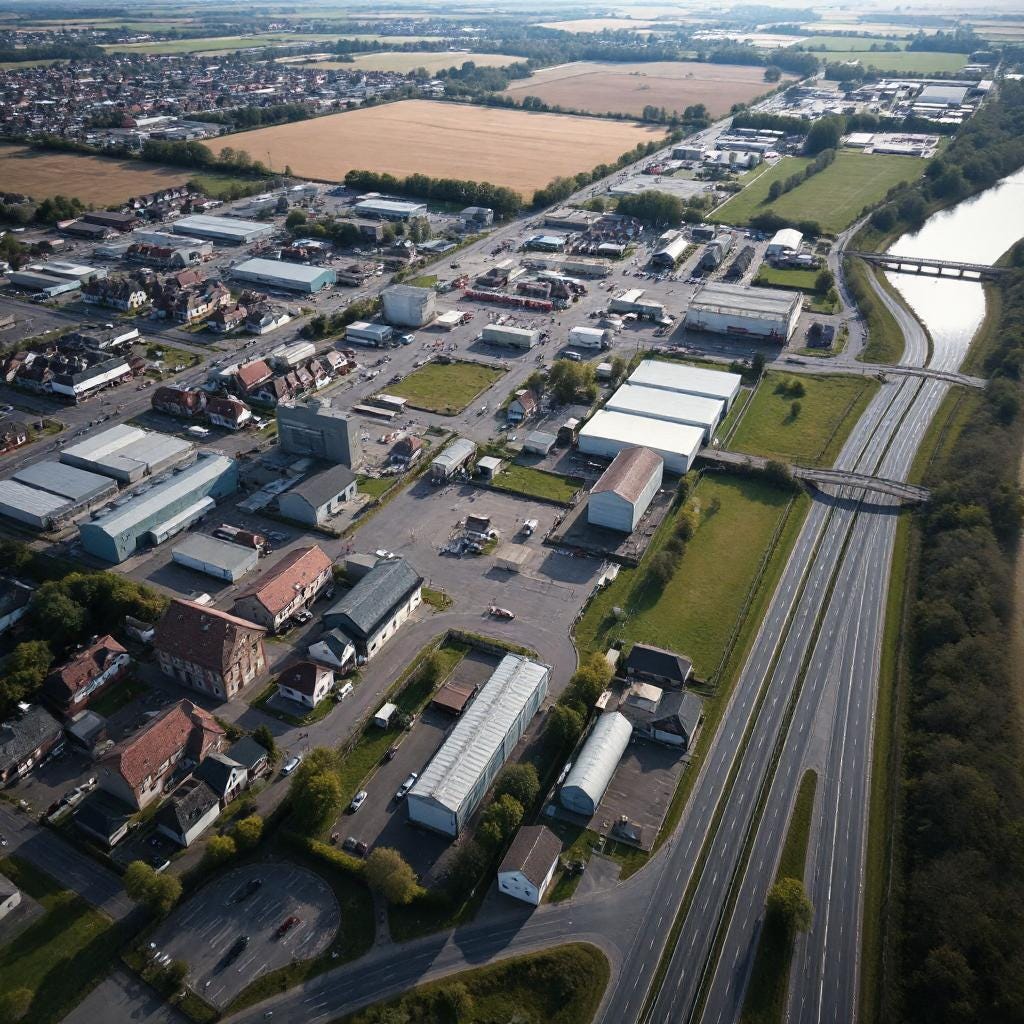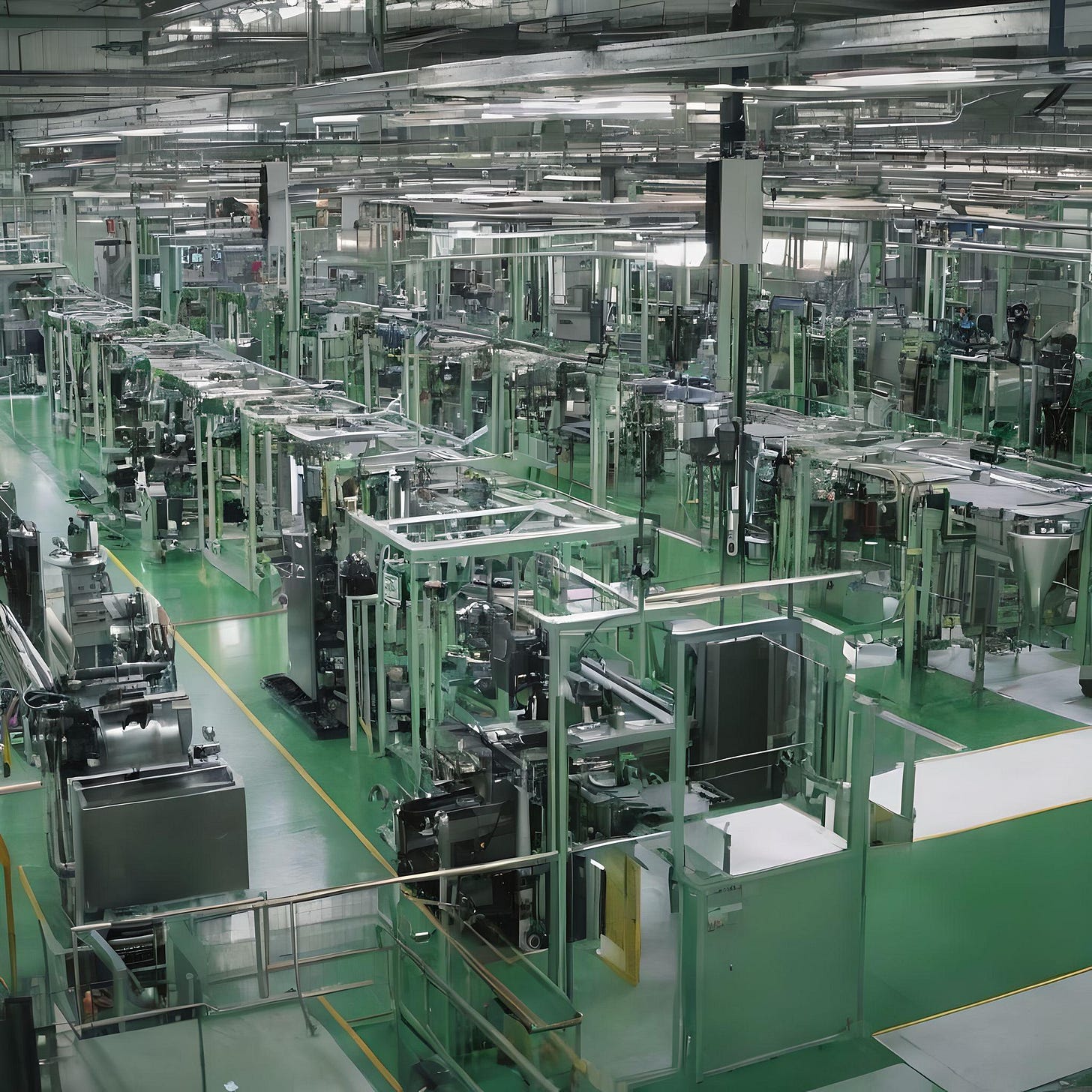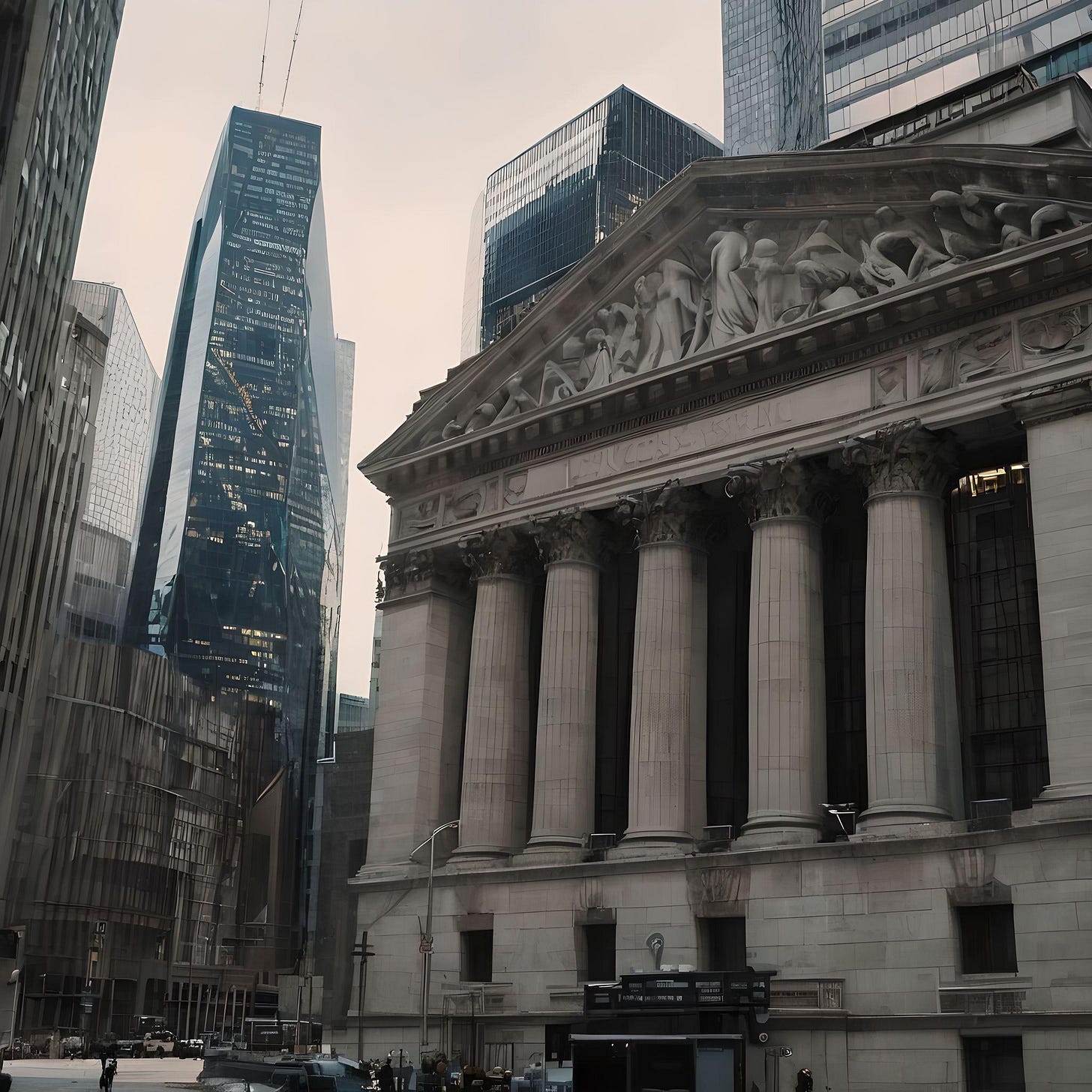The changing face of industrialisation in Europe
Industrial Transformation in Europe: 1950 to 2020
Technological advancements have played a crucial role in reshaping European industrial employment from 1950 to 2020, driving significant shifts in the types of jobs available and the skills required.
The European industrial landscape underwent a dramatic transformation characterised by shifts in industrial structure, location, and employment sectors. These changes had a profound impact on European economies, shaping their competitiveness, social structures, and regional development. Understanding these trends is essential for policymakers and businesses alike as they navigate the challenges and opportunities of the 21st century.
Post-War Industrialisation (1950s-1970s)
In the immediate post-World War II period, Europe experienced a remarkable economic resurgence known as the "Golden Age of Capitalism" or the "Trente Glorieuses"
During the immediate post-war period, technological advancements fuelled rapid industrialisation:
Key Features:
Innovations in heavy industries like steel, car-making, and chemicals drove employment growth in manufacturing sectors
The adoption of mass production techniques (Fordism) created numerous jobs in factories
This period saw high employment in traditional manufacturing industries.
Focus on heavy industries like steel, car-making, and chemicals
Strong national industrial policies
Corporatist arrangements between labour, capital, and the state
High employment in manufacturing sectors
During this era, industrial policy was predominantly pursued at the national level, with countries actively supporting and protecting key domestic industries
Shift to Services and High-Tech (1970s-1990s)
Technological progress began to reshape the industrial landscape:
Advancements in electronics, aircraft, and biotechnology created new employment opportunities in these emerging sectors
Automation and improved efficiency in traditional manufacturing led to declining employment in those industries
The service sector grew in importance, absorbing many workers from declining industrial sectors.
Rise of unemployment in former industrial heartlands
Key features of this period, the 1970s marked a turning point, with several changes occurring:
Gradual shift from heavy industries to electronics, aircraft, and biotechnology
Increasing importance of the service sector
Decline of traditional manufacturing in many regions
Rise of unemployment in former industrial heartlands
This period saw the beginnings of deindustrialisation in many parts of Europe, particularly in regions heavily dependent on coal, steel, and shipbuilding.
Neoliberal Era and European Integration (1980s-2000s)
The 1980s and 1990s brought significant changes to European industrial policy:
Focus on creating a single European market
Privatisation of state-owned industries
Emphasis on competition and market forces
Attempts to create "European champions" able to compete globally
Industrial policy became more indirect and horizontal, with a focus on creating a favourable business environment rather than directly supporting specific sector
s

Rise of the Knowledge Economy (1990s-2020)
From the late 20th century onwards, Europe increasingly focused on the knowledge-based economy.
The digital revolution and continued technological innovation further transformed employment:
Growth of high-tech and digital sectors created a demand for workers with specialised technical skills
Emphasis on innovation and R&D
Development of "clusters" and innovation ecosystems
Knowledge-intensive services became a major source of employment growth
Traditional industrial jobs continued to decline due to automation and offshoring.
Increasing employment in knowledge-intensive services
However, Europe faced challenges in this transition, often lagging behind the United States in productivity growth, especially in sectors related to information and communication technologies

Impact on Skills and Job Types
Technological advancements significantly altered the nature of work:
Demand shifted from manual labour to cognitive and technical skills.
New job categories emerged in fields like software development, data analysis, and digital marketing.
Continuous learning and upskilling became increasingly important for workers to remain employable.
Geographical Shifts
Technology-driven changes in industry led to geographical shifts in employment:
Traditional industrial regions, particularly in Northern Europe, experienced job losses
New industrial centres emerged in Southern and Eastern Europe
High-tech and knowledge-intensive industries tended to concentrate in urban areas and around universities
Structural Changes
Decline of Heavy Industry: Traditional heavy industries, such as coal mining, steelmaking, and shipbuilding, experienced a significant decline during this period. This was largely due to factors like rising energy costs, increased competition from developing countries, and technological advancements.
Rise of Service Industries: The service sector, encompassing industries like finance, retail, tourism, and information technology, witnessed a substantial growth. This shift reflected the changing nature of the global economy and the increasing importance of knowledge-based industries.
Manufacturing Restructuring: While manufacturing declined in relative terms, it remained an important sector in many European economies. However, manufacturing underwent a significant restructuring, with a focus on higher-value-added products and the adoption of advanced technologies.
Location Changes
Shift Towards Western Europe: During the early postwar period, industrial activity was concentrated in Western Europe, particularly in countries like Germany, France, and the United Kingdom. However, as the Cold War ended and Eastern European countries transitioned to market economies, industrial activity began to spread more evenly across the continent.
Development of Industrial Clusters: The concept of industrial clusters, where related industries are located in close proximity, gained prominence. This clustering facilitated knowledge sharing, collaboration, and the development of specialised supply chains. Examples of successful industrial clusters include the Silicon Valley in France and the automotive industry in Germany.
Outward Investment: European companies increasingly invested in manufacturing facilities in other regions, particularly in developing countries with lower labour costs. This led to a decline in domestic manufacturing employment in some sectors.
Employment Sector Changes
Decline in Manufacturing Employment: As manufacturing industries declined, employment in this sector also decreased. This led to concerns about job losses and deindustrialisation in certain regions.
Growth in Service Sector Employment: The growth of the service sector created new employment opportunities, particularly in areas such as finance, healthcare, and education. However, these jobs often required different skill sets than those needed in traditional manufacturing industries.
Increased Importance of Knowledge-Based Industries: The rise of knowledge-based industries, such as information technology and biotechnology, highlighted the importance of education and innovation in driving economic growth.
Technological advancements were a primary driver of changes in European industrial employment from 1950 to 2020. They led to the decline of traditional manufacturing jobs, the rise of service and knowledge-based employment, and created new challenges and opportunities for the European workforce.
Challenges and Recent Trends
By 2020, Europe faced several industrial challenges:
Widening productivity gap with the United States
Competition from emerging economies, particularly China
Need for green transition and decarbonisation of industry
Digital transformation and adoption of artificial intelligence
Europe's industrial structure has been described as relatively static, with few new companies rising to disrupt existing industries or develop new growth engines
In response to these challenges, there has been a renewed interest in more active industrial policies, focusing on strategic sectors, technological sovereignty, and the green and digital transitions.
References:
European Commission: https://commission.europa.eu/index_en
World Bank: [invalid URL removed]
History of Industrial Policy in the EU | Exploring Economics
The past, present and future of European productivity
(PDF) European Integration, Industrial Growth and Structural Change
FEEL FREE TO BUY ME A COFFEE IF YOU LIKE MY FREE RESOURCES
or one of my inexpensive books at
Amazon.co.uk: Ritchie Cunningham: books, biography, latest update










